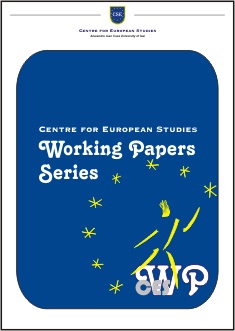CHRISTMAS – FROM RELIGIOUS TO LAIC. THE STIMULI THAT “SELL” CHRISTMAS
CHRISTMAS – FROM RELIGIOUS TO LAIC. THE STIMULI THAT “SELL” CHRISTMAS
Author(s): Teodora Cristina Roman, Adriana Manolică, Ioana Amarghioalei, Liviu-George MahaSubject(s): Economy
Published by: Editura Universităţii »Alexandru Ioan Cuza« din Iaşi
Keywords: Christmas gift; in-store stimuli; Christmas in stores; gender differences in choosing a gift
Summary/Abstract: Romania has been a country with a strong cultural background since ancient times. The Romanian people, born Christian, cherished holy days as part of its daily life, Christmas included. From a religious viewpoint, Christmas is one of the twelve holy days celebrated by the rulers of Byzantine Churches, being considered the third great holy day after Easter and Pentecost. However, in relation to the field of marketing, Christmas is a popular holy day, hence an occasion to increase sales. At the level of financial advantages provided, this holy day is the most important one, not only for retailers, but also for the other categories of merchandisers. There are various ways to celebrate this feast: parties, family gatherings, going to church and gifts. Christmas is a religious feast, supported by some people and rejected by others for having been turned into an occasion to spend money and party, thus ignoring its sacred character. Based on the aspects above as premises, this paper aims at shaping the buyer’s behaviour during Christmas time. Therefore, our aims are the identification of those in-store stimuli that create the atmospherics desired by customers when they take the decision to shop in a Christmas context. Another aim is to shape the buyer’s behaviour in choosing Christmas gifts, considering two variables: gender and age. Last but not least, we aim at highlighting the period in which in-store Christmas stimuli have been perceived, whether this coincides with the one when first gifts are bought or not, which was the average budget allocated or the moment people became aware they had to do the shopping for this holy day. The methodological approach includes both a qualitative approach, by using the structured interview and a quantitative approach by conducting a survey based on the snowball sampling method. The population investigated is aged between 25 and 65, lives in the urban area, is married and it was compulsory for the respondents to be part of the families that actually shop for Christmas. The conclusions drawn from this research lead to a lay environment of Christmas holidays and are useful to all retailers interested in maintaining a good relationship with their customers, build consumer goodwill and boost sales during Christmas time.
Journal: CES Working Papers
- Issue Year: 6/2014
- Issue No: 2
- Page Range: 117-134
- Page Count: 18
- Language: English

